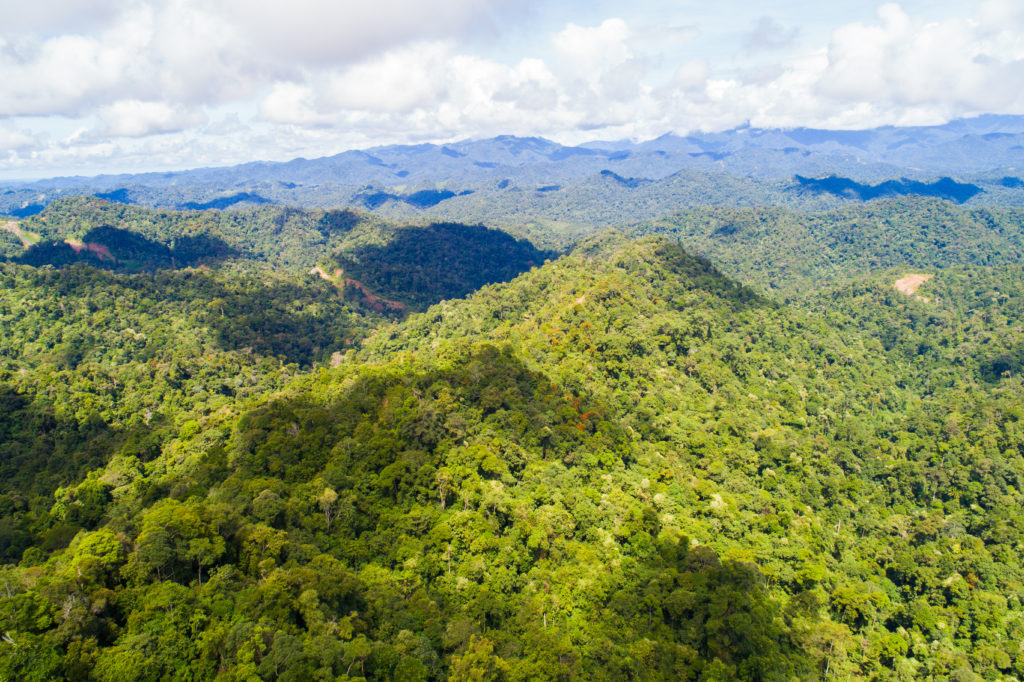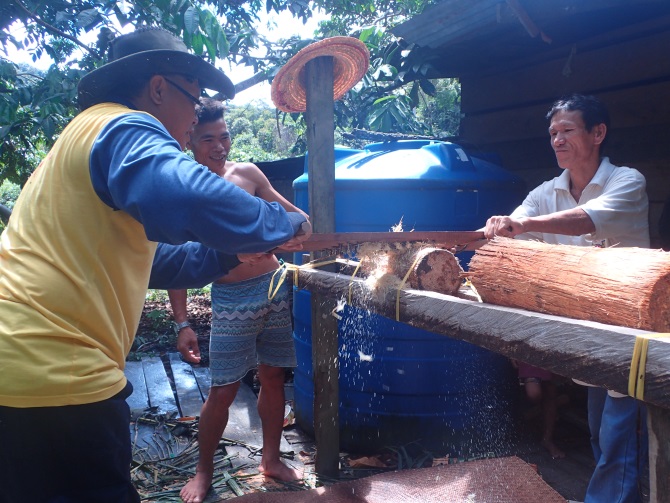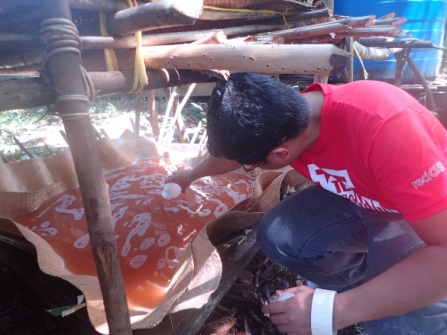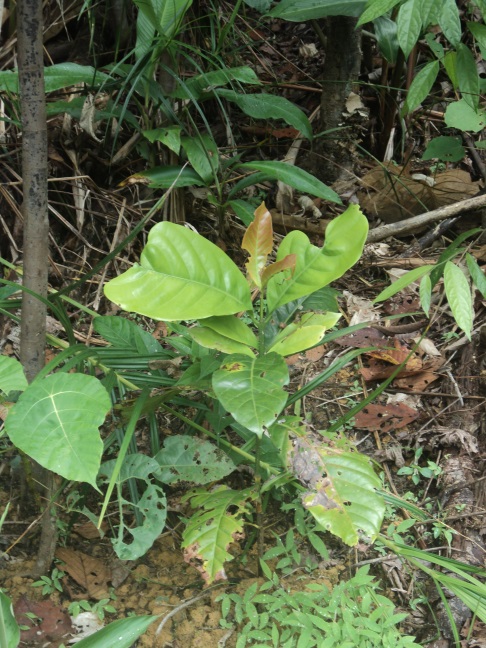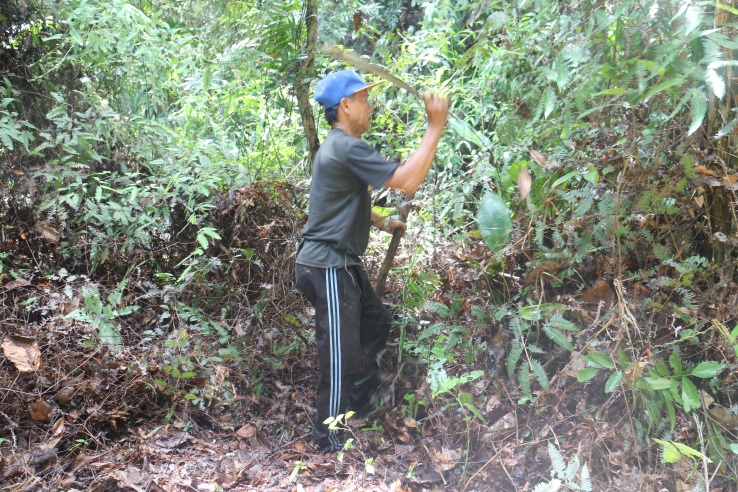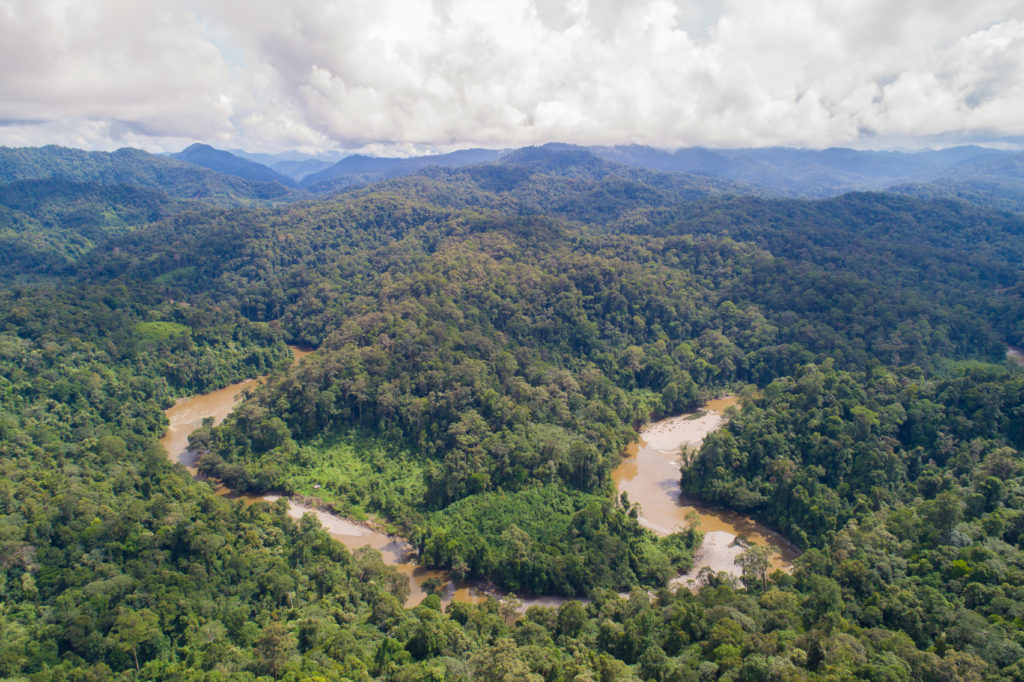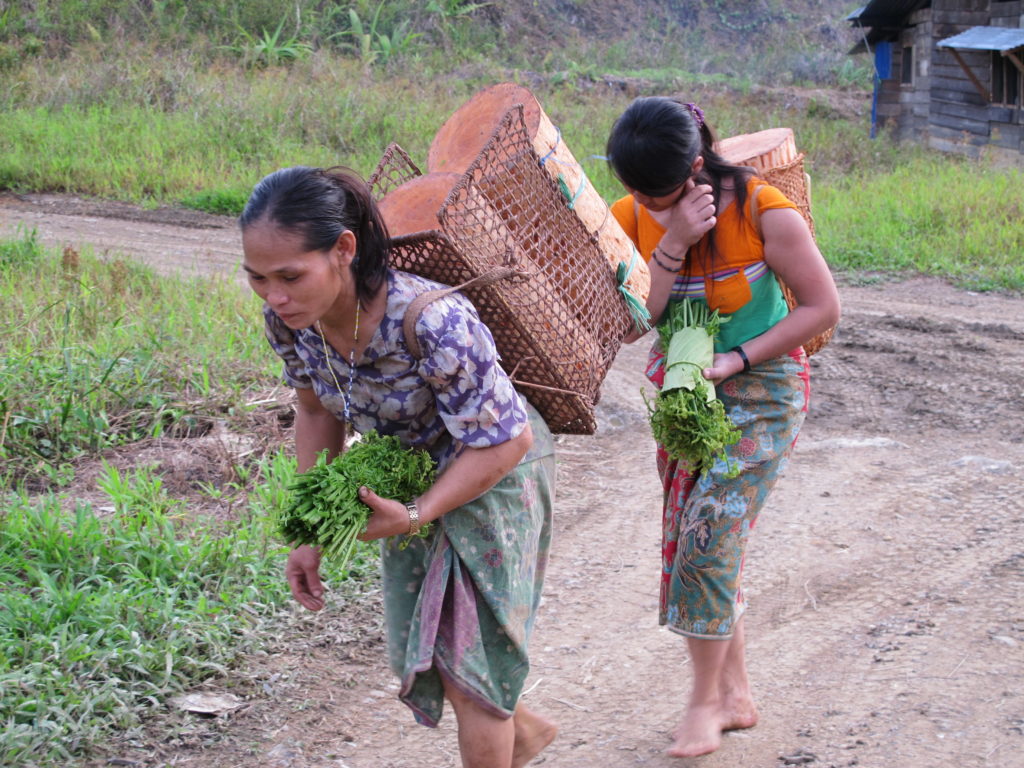1. Empowering communities for the co-management of Kubaan-Puak
The Project aimed to empower the local communities living in the Kubaan-Puak FMU by establishing a Community Representative Committee (CRC), providing information and building the management capacity.
1.1. Establishing a Kubaan-Puak FMU Community Representative Committee
CRCs are a critical component of all contemporary Forestry Management Plans and sustainable forest certification. The CRC is a platform for committees to communicate with government agencies and private organisations on the priorities of the local community.
The process of developing the Kubaan-Puak FMU CRC involved:

- In February 2015 WWF Malaysia met with six different communities living in the Kubaan-Puak FMU to discuss the aims of the Project and introduce contemporary sustainable forest management.
- In May 2015 WWF Malaysia met again with villagers to discuss the Project.
- In November 2015 WWF Malaysia hosted a Kubaan-Puak stakeholder workshop in Kuching, which included community members, the timber company and government officials.
- In June 2016 WWF Malaysia hosted a trip to the Anap-Muput FMU in Bintulu to learn how a CRC operates and co-operates with the timber company (Zedtee Sdn Bhd) to achieve sustainable forest management. The trip included a CRC workshop which explored the objectives, benefits and challenges of establishing a CRC.
During July 2016 the inaugural Kubaan-Puak FMU CRC was elected at an election workshop held in Long Si’ang. The CRC represents seven villages in the Kubaan-Puak FMU, including Long Si’ang, Long Kawa, Ba Marong, Ba Selulong, Ba Bareh, Ba Tepen and Long Taha.
During July 2017, the Kubaan-Puak CRC held their first annual meeting at Ba Selulong. The agenda of the meeting included:
- electing representatives for the next term;
- improving the representation of women on the CRC;
- reporting on CRC activities;
- preparing messages for the next SFM Liaison Committee Meeting; and
- organising the CRC Community Bonding Day.
The annual meeting was followed by a cross community CRC bonding day, which included playing traditional and contemporary games. Semi-nomadic Penan community from different villages in Kubaan-Puak, Ulu Tutoh, Sarawak had a whale of a time in the first community bonding day (telematics) held by Kubaan-Puak Community Representative Committee (CRC) and WWF-Malaysia. The bonding day improved communication and relationships between the different village communities represented on the CRC.
1.2. Information exchange
During January 2017 WWF Malaysia visited the local communities in the Kubaan-Puak FMU to share information about the Project. The main objectives of the visit were to:
- provide feedback from a previous workshop with the Ba Selulong community;
- check on the progress of community projects established in Ba Selulong and Long Si’ang; and
- inform communities about planned camera trapping activities scheduled for February 2017.
1.3. Capacity building workshop in Ba Selulong
WWF Malaysia hosted a capacity building workshop at Ba Selulong during March 2017. The workshop was developed to assist CRC members practice and apply the skills required for an effective CRC. The workshop was also used as an opportunity to obtain the CRC’s feedback of the progress of community projects (Rattan replanting, pilot farms, handicraft training and the production of the coffee table book).
2. Establishing Food Security in the Forest
The Project aims to establish food security by facilitating agricultural research, exchanging information, building capacity and developing demonstration plantations.
2.1. Farming workshop at Long Seridan
During February 2017, WWF Malaysia facilitated a farming workshop at Long Seridan. The objectives of the farming workshop were to:
- share the farming practices applied by farmers; and
- distribute vegetable seeds and materials for preparing organic compost.
The workshop was led by Mr Make Jiwan, q horticulturist lecturer from the University of Putra Malaysia (UPM), and Dr Petrus Bulan, a lecturer at UPM, who specialises in plant seed. Approximately 15 Kelabit participants from Long Seridan and 20 Penan participants from the Kubaan-Puak project area attended the workshop.
The workshop covered:
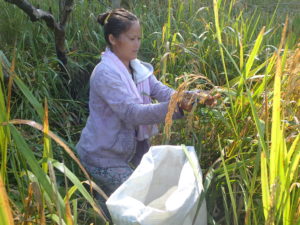
- Seed selection before planting
- Area preparation
- Vegetables and their nutrients
- Selecting a farm location
- Storing seeds
- Planting systems
- Chemical fertiliser use
- Preparing organic fertiliser / compost – the Bokashi Technique.
- Organic pesticides
- Using plants for pest control
- Preparing effective micro-organisms for composting
- Using chemical pesticides
At the end of the workshop, each Penan participant was given two types of vegetables seeds (green leafy vegetables, locally known as sawi and kangkung) and two buckets for making organic compost.
Participants enjoyed the practical components of the workshop, and requested further information on soils, preparing planting beds, organic fertilisers, pesticides and herbicides.
2.2. Farming workshop at Ba Selulong and Long Si’ang
During May 2017, WWF Malaysia hosted farming workshops at Ba Selulong and Long Si’ang. The workshops were used to develop pilot farms for each village. The pilot farms will be supported by WWF Malaysia and the Department of Agriculture. WWF Malaysia supported each village by proving farming tools, while the Department of Agriculture provided 143 banana seedlings to 20 households in Ba Selulong.
2.3. Monitoring the pilot farms
During August 2017, WWF Malaysia visited five pilot farms (four in Ba Selulong and one in Long Si’ang). WWF Malaysia found that most of the planted vegetables seeds did not germinate except for the farm that belonged to Dayang Buki at Ba Selulong. According to the farmers, most of the seeds did not germinate even though they were watered every day. The pilot farms were provided with new seeds sourced from an alternative seed supplier.
2.4. Sago planting and processing
Following a Sago survey and mapping exercise completed around Long Si’ang in October 2015, WWF-Malaysia and Craun Research started a wild sago research project at Long Si’ang in February 2017. The objectives of the research were:
- study the commercial and wild Sago palm (Eugeissona utilis and Metroxylon sagu) in Long Si’ang and Long Belok;
- establish a research plot of wild Sago;
- engage with the local community to share expert and indigenous knowledge;
- identify key community members to maintain and monitor the Sago research plot;
- compare the starch yield efficiency of Sago processing techniques (traditional versus grinding); and
- collect Sago samples for lab analysis.
2.4.1. Planting the Sago trial
The project team worked together with locals to prepare the research plot. Twenty seven Sago seedlings selected from a nursery plot in Ba Selulong, were measured and then planted at 5 metre intervals. A fertiliser treatment was also applied to measure the impact of applying fertiliser.
2.4.2. Measuring the Sago trial
During June 2017 the hill Sago trial was measured for growth performance. The information recorded will provide a useful reference to local farmers and other research teams interested in the growth performance of hill Sago.
During August 2017 WWF Malaysia visited the trial site and found that 22 Sago palms had survived, but they were in poor condition. Craun Research believes that the poor growth is due to a nutrient deficiency that is related to soil type and/or fertiliser application. The trial will continue to test new planting methods.
2.4.3. Evaluating other Sago plants
The project team travelled to Long Belok to study the thorny species of Metroxylon sagu (locally known as balau). According to the headman of the village, the mother palm was originally taken from Long Bemang in 1978 and planted in the village. The people of Long Belok have collected seeds from the mother palm and re-planted approximately 60 palms around the village.
Two balau seedlings were collected from the mother palm and will be included in the trial at Long Si’ang.
2.4.4. Sago processing
The Sago processing trial was designed to evaluate two different methods for extracting Sago starch. Trunks of hill Sago (Buah bala) were collected from the Long Kawa area and then weighed and measured. The traditional extraction method, known as the beating method, involves rasping the Sago pith with a small hoe made from tree stems. An alternative method, known as the grinding method, involves rasping the Sago pith using a board and nails.
It was found that starch can not be completely extracted using the grinding method. The beating hoe was still required for optimal extraction.
2.5. Fruit planting
The Project developed a fruit production trial using seedlings provided by the Department of Agriculture and WWF Malaysia. During a field visit in March 2017, WWF found that all fruit seedlings survived, except the lime planted at Ba Marong and Long Si’ang, and half the Durian seedlings planted at Long Si’ang. The locals felt that the soil was too hot and hard for lime production.
2.6. Coffee plantation
A trial coffee plantation was established near Long Si’ang, that also included Banana and rubber trees in the inter-row. A field visit in January 2017 found three coffee seedlings had died and much of the trial was overgrown with grass and bushes.
2.7. Developing a Tagang system to improve fish production
The implementation of a Tagang fishing system provides a protected breeding ground for freshwater fish and controls harvest rates to optimise fish production.
During November 2015, WWF Malaysia took members of the Long Si’ang community to visit the Tagang fishing system in Mongkos, Serian. In April 2016, the Long Si’ang community completed a survey to identify a suitable site for a Tagang project.
The Department of Agriculture approved the development of a Tagang fishing system at Long Si’ang in late 2017. WWF Malaysia is now supplying the local community with fish feed, and the Tagang Committee members are feeding the fish twice a day (when river conditions allow). Early monitoring indicates that fish numbers are increasing in the feeding area.
3. Ecosystem maintenance
The Project aims to support native ecosystems by replanting depleted stands of natural Rattan, developing a sustainable land use plan and ecosystem monitoring.
3.1. Rattan replanting
The Project aims to maintain Rattan ecosystems and supply local artisans with raw materials for handicrafts. Rattan replanting is planned for three villages, including Ba Selulong, Long Si’ang and Ba Marong. The target is to provide each village with 500 Rattan seedlings and locals are encouraged to take part in the Project. The Project aims to distribute Rattan seedlings, known locally as rotan segak or wai bukui (Calamus axillaris Becc), as it is considered the best Rattan for making handicraft by the Penan community.
In March 2017, WWF-Malaysia and the Department of Agriculture Miri organised Rattan planting field days at Ba Selulong, Long Si’ang and Long Kawa. During the field days, a total of 300 rattan seedlings were planted around the three villages (i.e. 100 rattan seedlings per village). Mr John ak Jadol, a technical advisor from the Department of Agriculture, provided Ratten management training to members of each village.
During June 2017, WWF-Malaysia, the Forest Department Sarawak and the Department of Agriculture distributed a further 1200 rattan seedlings to 20 households in Ba Selulong. The seedlings distributed in June were too young to plant, so locals were asked to nurse the seedlings for up to a month before planting.
During August 2017, WWF Malaysia visited the Rattan plantations and found that most of the Rattan had survived.
3.2. Developing a land use concept
During January 2016, Envisar were engaged to prepare baseline data for forest condition, and describe biodiversity and ecosystem services within the Kubaan Puak corridor. Envisar also prepared land use and data maps for the corridor, based on guidance from the HoB Corridor Implementation plan.
The WWF Malaysia GIS team developed an online version of the land use plan and entered the land use planning data into WWF’s Global Observation and Biodiversity Information Portal (GLOBIL).
During April 2017, the Kubaan-Puak corridor land use maps were presented to government officials, the Sarawak Forestry Corporation and timber companies (Ta Ann, Samling, Lee Ling) at a HoB technical consultation workshop co-organised by the Forest Department Sarawak, WWF-Malaysia and Curtin University.
Further stakeholder consultation on the land use plan was completed during September 2017 at an event hosted by the Forest Department Sarawak. Key stakeholders at the event included:
- the Forest Department Sarawak;
- the Ministry of Urban Development and the Natural Resources;
- the Sarawak Forestry Corporation;
- the Natural Resources and Environment Board; and
- timber companies operating timber concessions in the area.
The Sarawak Government, through the Forest Department Sarawak, acknowledged the contribution the Project has made to effective community participation in the forest management certification process, and promoting ecological connectivity between protected areas.
As of October 2017, the Forest Department of Sarawak has instructed all forest concessionaires to recognise the join rights of local communities to forests resources in their Forest Management Plans. Specifically, the Forest Department of Sarawak has asked forest concessionaires to develop community based projects and assist local communities develop alternative livelihood options.
3.3. Ecosystem monitoring
WWF-Malaysia and the Forest Department Sarawak completed a four month camera trapping program during June 2017. Fourteen camera traps were deployed in the village precincts of Ba Selulong and Long Si’ang to monitor biodiversity and wildlife in the area. The camera traps recorded species of macaques, porcupines, barking deer, sambar deer and wild pigs.
During the camera trapping exercise, WWF also worked with the local communities to geo reference important forest resources. The data obtained during the mapping exercise has been used to develop high priority areas for local communities.
4. Achieving forest management certification for the Kubaan-Puak FMU
The Project aims to assist the Kubaan-Puak FMU achieve sustainable forest management certification by completing a certification feasibility study, collecting data, building capacity and completing a HCV Assessment.
4.1. Certification feasibility study
WWF Malaysia commissioned a Forest Management Certification feasibility study for the Kubaan Puak FMU. The objectives of the study included:
- evaluate the certification readiness of the Kubaan-Puak FMU
- scope the activities for the Kubaan-Puak FMU to fully comply with the MC&I (Natural Forest) certification standards
- develop the structure of a certifiable Forest Management Plan
- assess the overall feasibility of achieving forest management certification for the Kubaan-Puak FMU
The feasibility study completed in October 2015, with the following conclusions:
- an environmentally sound, socially beneficial and economically viable management system can be achieved in the FMU, provided the principles of Sustainable Forest Management are effectively implemented.
- a profitable SFM operation is possible though it may take some time to produce the benefits.
- The potential economic value of the FMU could be improved by:
- attracting financial investors to generate initial funding for certification
- monetising ecosystem or environmental services, such as climate change mitigation, watershed services and biodiversity conservation
- developing ethno-tourism and ecotourism opportunities
- identify markets for sustainably produced timber
- promoting the HoB concept globally
- The FMU faces no major restrictions or unmanageable obstacles to forest management certification.
- Adequate, human, technical and financial resources must be made available.
- Internationally acknowledged forest management certification delivers a range of company benefits, including:
- public recognition as a responsibly managed company with green image
- easier access to environmentally sensitive markets and consumers
- higher prices for certified timber in some consumer markets
- improved credit facilities with financial institutions
- better access to investors in sustainable resource management
- enhanced management expertise and skills in sustainable forestry practices
- positive and stronger relationships among all staff and stakeholders
- improved management systems, procedures, and operational efficiency
- working towards achieving forest certification requires a efforts across all levels of the company.
- Commitment to change, good leadership, team spirit, persistence, professional knowledge, proactive communication, positive thinking and action towards the common certification goal all are essential components for success.
4.2. Social assessment
During June 2016, a study was completed with local communities to understand the:
- key species in the area;
- location of important ecosystem services; and
- importance of the forest to local communities.
Working with the local communities allowed important relationships to develop between the local communities, the timber company and the local authorities.
4.3. High Conservation Value training
During November 2016, WWF Malaysia facilitated a High Conservation Value (HCV) training workshop for companies holding Forest Management Units (FMUs) in the corridor. Training invitations were sent to ten active FMUs, and six FMUs accepted the invitation. A total of 12 officers and managers were introduced to the following subjects:
- HCV identification, management and monitoring
- The HCV assessment process and the licensing scheme
- Wildlife monitoring using the SMART application
- Wildlife data analysis using the SMART application
All participants agreed that the training content was relevant to their business, however, many found the HCV monitoring and management requirements difficult, especially using the SMART software. Participants appreciated the management and monitoring plan drafting exercise and suggested the training could be improved with field based training.
5. Establishing market links for local handicraft products
The Project aims to assist the region establish markets for handicraft products by funding handicraft training, assisting with logistics and promoting the region to an international audience.
WWF Malaysia have appointed two handicraft coordinators, as requested by locals, to collect the handicraft from different villages and transport the products to local markets.
During May 2016, WWF Malaysia facilitated a joint workshop where Tanoti Sdn Bhd, Kraftangan Malaysia and the local Penan discussed the potential for developing a Penan handicraft industry.
During August 2016, WWF Malaysia assisted a number of women from Kubaan-Puak to attend the World Craft Bazaar. Participants at the Bazaar learned how to sell and promote their handicraft.
-
www.facebook.com/wwfmy/posts/10156822809763242
Kraftangan Malaysia Handicraft Bazaar at Kuching Waterfront in November 2017
WWF Malaysia has assisted the Kubaan-Puak community develop a coffee table book to promote their culture and products to an international audience.

